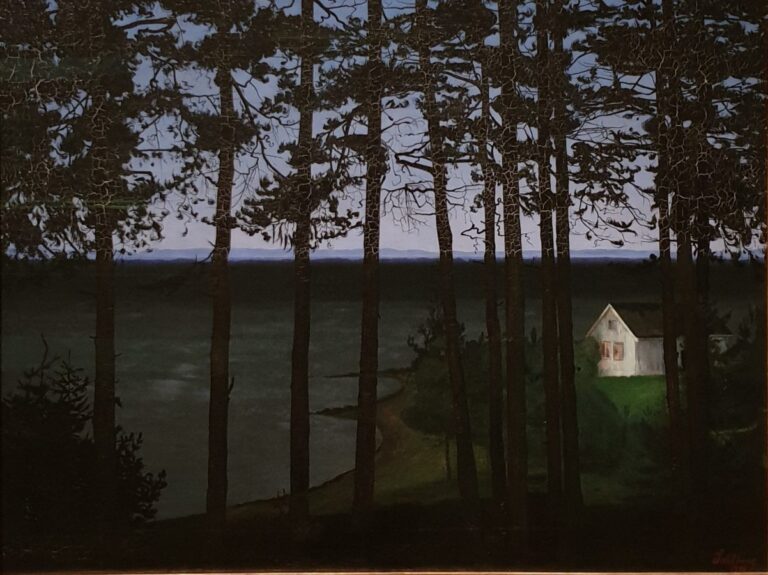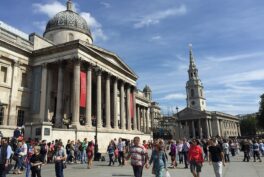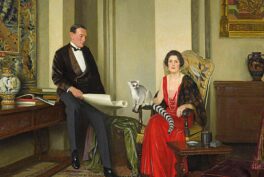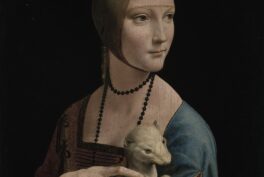Meet Harald Sohlberg (1869-1935), the creator of the “National Painting of Norway”. He may not be as well-known outside of Norway as Edvard Munch, but he is certainly beloved there. Typically associated with Symbolism and Neo-romanticism, through his travels he was well aware of current art developments but retained his individual style and interests. An exhibition at the Dulwich Picture Gallery in South London aims to introduce Sohlberg to a wider audience outside of his country. The exhibition, much like the Dulwich Picture Gallery itself, is not too big, but thanks to this it allows us to focus on and absorb Sohlberg’s art.
I admit I was not aware of Sohlberg’s works before and I would now gladly own a few of them if it was possible (technically it may be, I would just need some patience and some more money). The curators clearly worked with such an assumption in mind, creating an exhibition that not only introduces a painter that may be relatively unknown to the audience but also allowing us to observe his development and the themes his art revolved around.
Sohlberg in a Nutshell
The first room could not be a better introduction. We are welcomed by Sohlberg’s self-portrait, observed by his intense gaze and slightly distracted by his stylish moustache. Then we turn to a dizzying palette of vivid colours that fill his landscapes. From the fiery orange of the Evening Glow to the vividly lush greens of the Ripe Fields and the bottle greens and cobalt blues of the Summer Night, the room feels like it contains a rainbow, giving us the childish pleasure of almost inhaling pure vibrant colour.
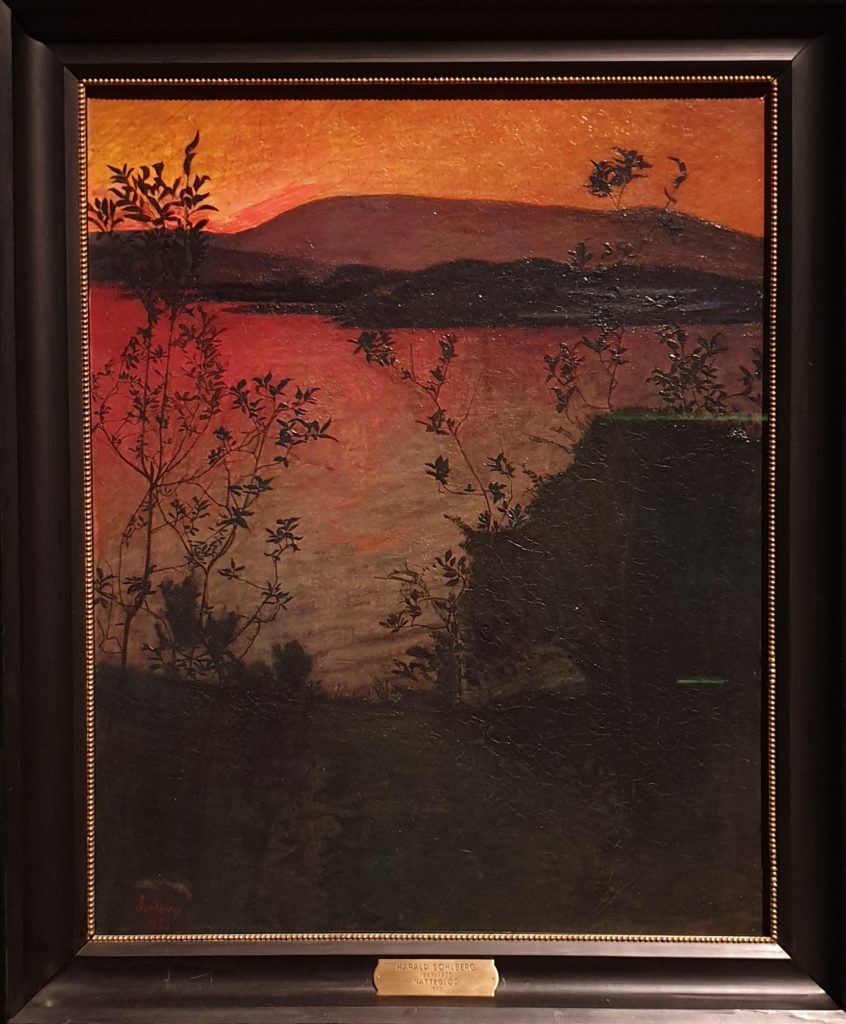
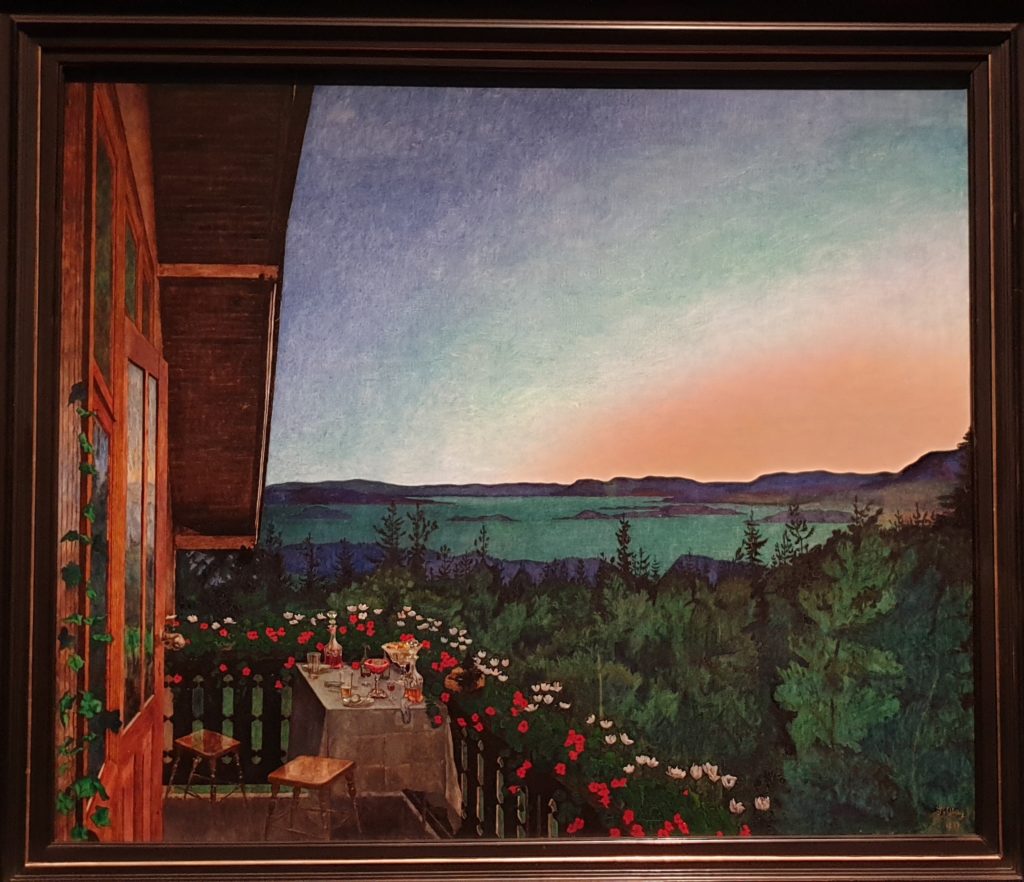
Do not interpret Sohlberg’s style as simple or lacking in subtlety. Every landscape in the room stands out on its own, with Sohlberg using the colours boldly but also consciously to evoke the mood, the light and the atmosphere. He does this so vividly that you can almost smell them. Clearly, evening and night were his favourite subjects. He masterly draws us into the time of day when the world quietens, our senses sharpen and our logic relaxes and gives way to a more sensual perception. Fisherman’s Cottage can convey either calmness, silence and solitude or threat; the mood of the piece is in the eye of the beholder.
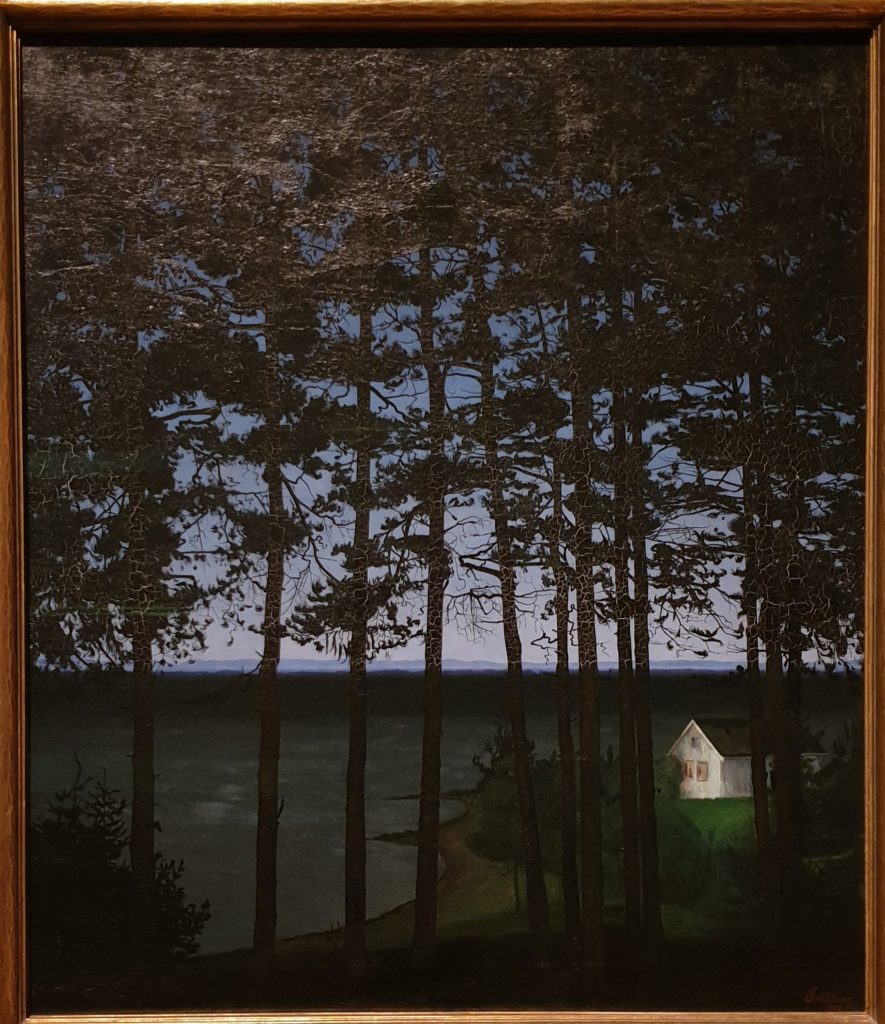
To complete the picture of Sohlberg, in the middle of the room we can see his personal letters that he cheerily illustrated. This reveals to us another side of him, showing that he was not only a moody painter of symbolist landscapes but also a man full of humour and wit who did not take himself too seriously.
Where are the People? – Drawings and Prints
The next room focuses on the graphic side of his oeuvre, thereby showing us yet another facet of Sohlberg’s creativity. Although his landscapes are devoid of human presence, he clearly enjoyed drawing people, as the series of focused portraits show us. He also drew extensive studies for his paintings. They tend to become very sharp as opposed to his flowing landscapes, probably influenced by his early training as a decorative painter.
We also see the multiple variations on the subject of a mermaid. Sohlberg must have found various aspects of these creatures fascinating, showing them in many moods, from vulnerable to full of lust and desire all the way to vicious and cruel.
Welcome to Røros. Town and Country
Sohlberg moved to the town of Røros, for a few years and painted it extensively. His style radically changed when he painted architecture, becoming sharper and contour-oriented. One aspect, however, stayed constant – his paintings remained as “human-free” as possible: The town feels abandoned and cold. At this point, I started missing the serenely calm landscapes of the first room.
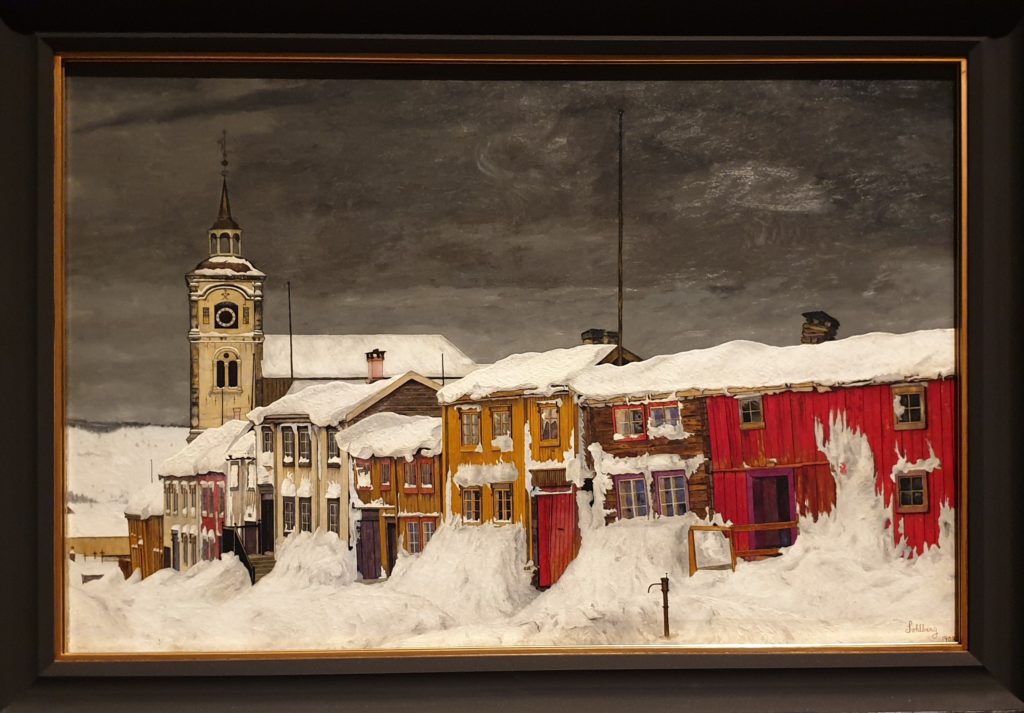
The contrast of Sohlberg’s changing style is even starker when the landscapes and townscapes hang together. It feels as if his sensitivity completely changed with the subject, the man-made buildings with clearly defined contours relying on the line to express their form, and the softer but powerful depictions of nature using colours as the main means to invoke mood.
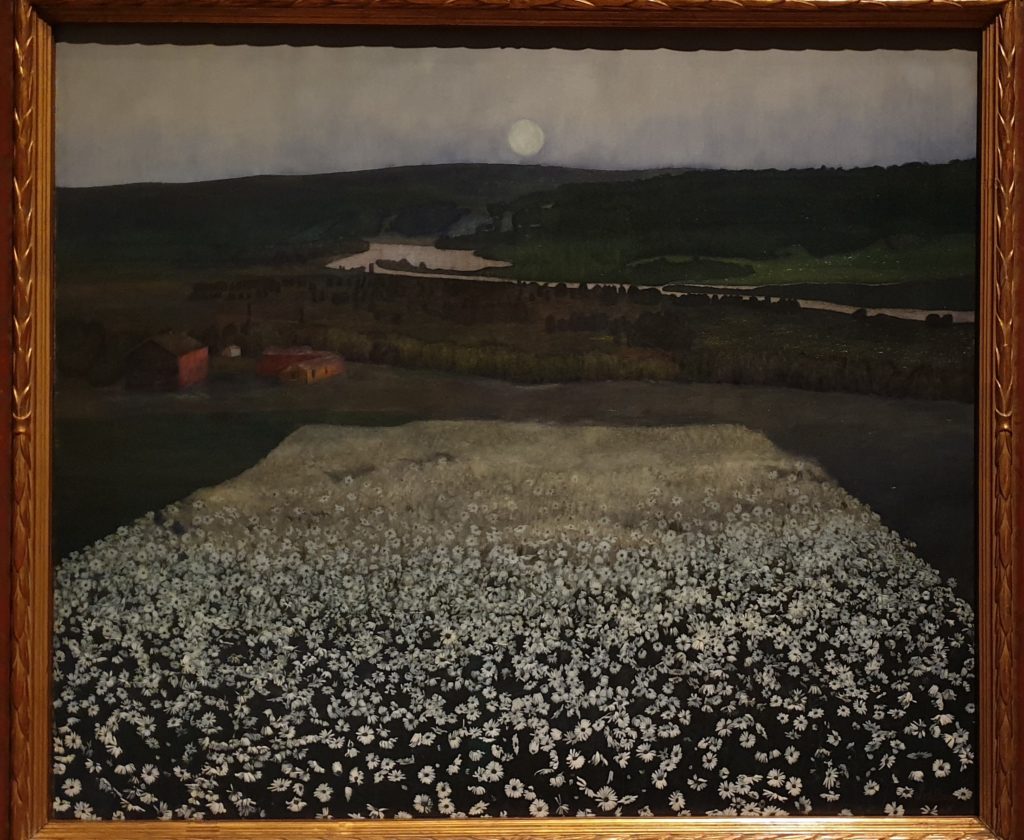
Let Me Focus
In the last two rooms, we return to landscapes. As Sohlberg’s art matured, he became more confident and the tranquillity of his earlier paintings returned. He started focusing on one dominant colour in his pictures and weaving his landscapes around it, like music around a core theme. Orange sunsets and cobalt nights rule here, the clarity of colour bringing to mind stained glass.
These paintings are simpler and more focused, preparing us for the meditativeness of the powerful “National Painting of Norway” – Winter Night in the Mountains.
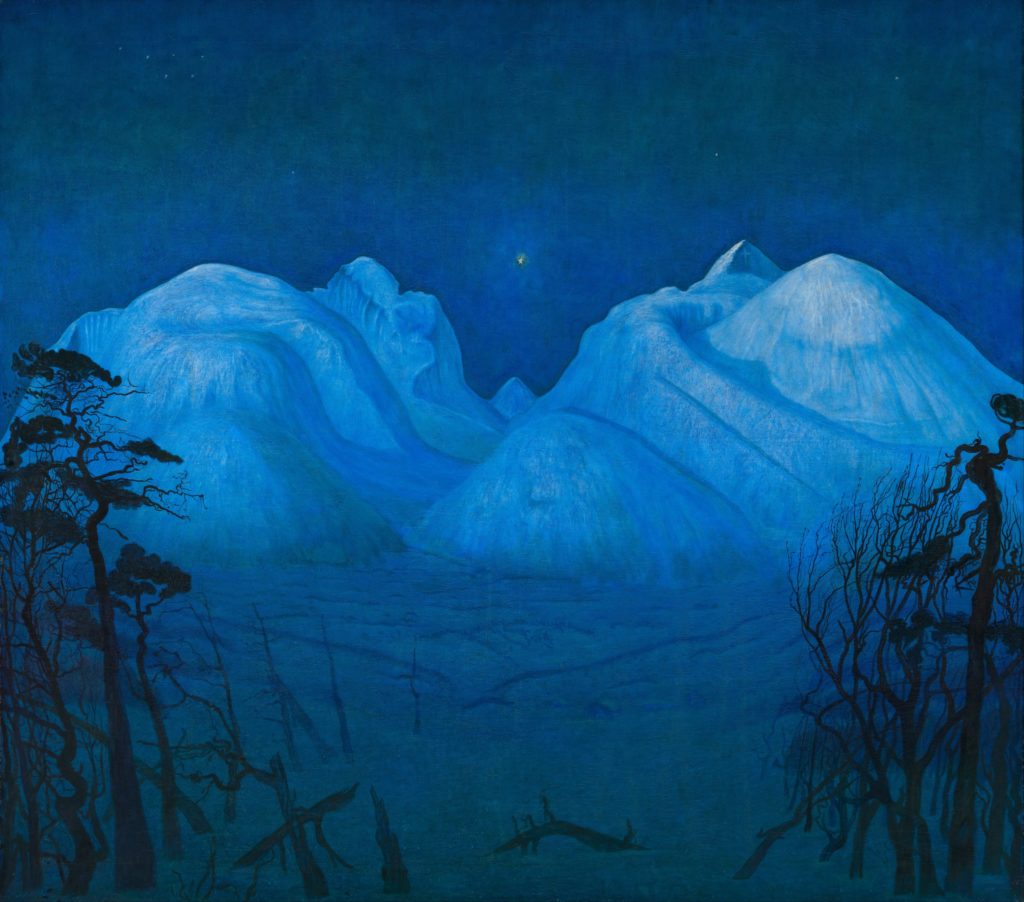
Good to Meet You Mr Sohlberg
As intended this exhibition gives us a comprehensive but not overwhelming introduction to the works of Harald Sohlberg. It is accompanied by a beautiful catalogue full of vibrant reproductions and thoughtful essays providing a more in-depth perspective. While roaming through the rooms we are also invited to enter the mausoleum hosting the work inspired by Sohlberg. And Then the World Changed Colour: Breathing Yellow by Mariele Neudecker draws us into the magical space of a Norwegian forest.
Dulwich Picture Gallery is a bit out of the way, but this exhibition is certainly worth visiting if you are in London. Also if the weather permits you can make a day out of it and interact with nature directly in Dulwich Park.
On a side note, I found the idea of a single painting representing a country fascinating (as unrealistic as it is). What would be the painting to represent your country?
Exhibition Trailer
Harald Sohlberg: Painting Norway
Dulwich Picture Gallery
13 February – 2 June 2019
10am – 5pm, Tuesday – Sunday (Closed Mondays except Bank Holidays)
Price: Adult: £16.50* Senior (65yrs+): £15.50* Concessions: £8* (Unemployed, Disabled, Student, Art Fund, Museums Association Members). Friends, Under 18s and Carers: Free. *Includes optional Gift Aid donation
[easyazon_image align=”none” height=”160″ identifier=”3777430889″ locale=”UK” src=”https://www.dailyartmagazine.com/wp-content/uploads/2019/03/51KTXZOKQXL.SL160.jpg” tag=”dail005-21″ width=”137″]
If you feel like exploring more Scandinavian art check those out:
